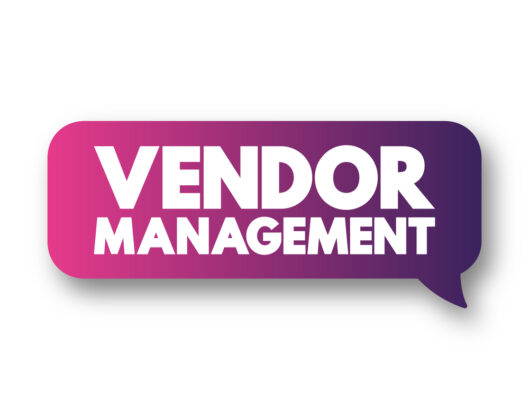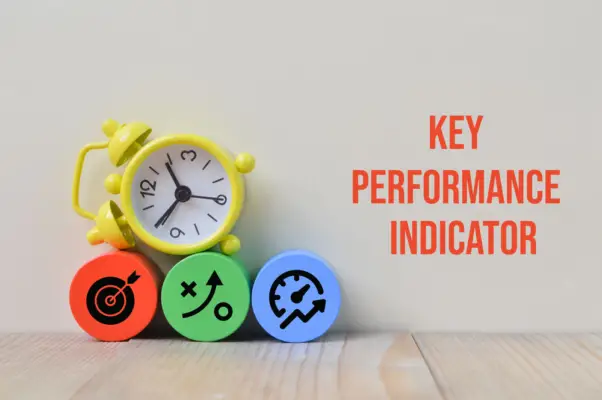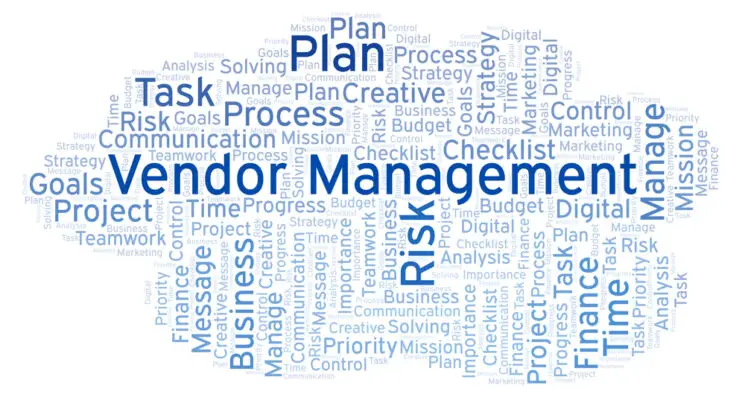In the dynamic world of business, mastering vendor management is crucial for maintaining operational efficiency and mitigating risks. This blog offers an in-depth look at the essential metrics that enable organizations to monitor and manage potential risks effectively.
Learn how to identify and track these critical indicators to optimize supplier relationships, streamline processes, and drive success in your organization.
As you delve further into the “Vendor Management Key Risk Indicators” blog post, you’ll gain valuable insights into the importance of vendor management in today’s competitive market.
Discover key risk indicators‘ role in shaping effective vendor management strategies, and explore various critical KRIs, such as financial stability, operational performance, compliance, and reputational risks.
The blog post also highlights practical steps to utilize KRIs in enhancing your vendor management process, including monitoring and tracking KRIs, setting risk tolerance thresholds, and integrating KRIs into decision-making.
Moreover, you’ll learn how to establish a continuous improvement framework for KRIs through periodic reviews, benchmarking against industry best practices, and lessons learned.
Equipped with the knowledge gained from this comprehensive guide, you’ll be well-prepared to implement KRIs for more effective vendor management, resulting in stronger supplier relationships, reduced risks, and a more successful and resilient organization.

Importance of Vendor Management in Business Operations
Establishing strong relationships with suppliers and service providers helps maintain smooth operations, contributes to cost optimization, and mitigates risk. Carefully selecting and managing vendors ensures product quality, efficiency, and reliability, resulting in improved customer satisfaction and increased revenue.
The Role of Key Risk Indicators in Effective Vendor Management
Managing vendor relationships effectively requires organizations to identify and monitor potential risks associated with their vendors. Key risk indicators (KRIs) are essential metrics that help measure and track potential risks, allowing informed decisions, identifying areas for improvement, and mitigating potential issues before escalation.
Understanding and utilizing KRIs in vendor management enables businesses to proactively address challenges and optimize relationships with suppliers and service providers.
Overview of Key Risk Indicators (KRIs)
Definition of Key Risk Indicators
(KRIs) is quantifiable metrics that assess and monitor potential risks in various aspects of an organization, including vendor management. As early warning signals, KRIs help businesses identify potential issues and take proactive measures to prevent or mitigate their impact on operations, finances, and reputation.
Purpose of Using KRIs in Vendor Management
In the context of vendor management, KRIs play a vital role in ensuring supplier relationships are efficient, reliable, and secure. Tracking relevant KRIs allows organizations to gain insights into vendors’ performance, financial health, and compliance, leading to more informed decision-making and risk mitigation. Using KRIs in vendor management empowers businesses to
- Identify potential risks associated with suppliers and service providers
- Monitor vendor performance and compliance
- Optimize resource allocation and risk mitigation strategies
- Strengthen supplier relationships and improve collaboration
- Enhance overall operational efficiency and cost management
Identifying and Developing Appropriate KRIs
Effectively leveraging KRIs in vendor management requires identifying and developing appropriate indicators aligning with your organization’s specific needs and objectives. The process of identifying and developing KRIs typically involves these steps:
- Define your organization’s risk appetite and priorities: Establish a clear understanding of acceptable risk levels and key areas of focus for your vendor management efforts.
- Review existing vendor management processes: Analyze current vendor management processes to identify gaps and areas where KRIs can provide valuable insights.
- Consult with stakeholders: Engage relevant stakeholders, such as procurement, finance, and operations teams, to gather input and ensure alignment on KRIs selection.
- Select relevant KRIs: Choose KRIs relevant to your organization’s risk priorities, industry, and specific vendor relationships.
- Establish KRI thresholds: Set acceptable and critical thresholds for each to guide decision-making and risk mitigation actions.
Critical KRIs in Vendor Management
Financial Stability
- Financial Health Assessment
Assessing a vendor’s financial health is a crucial KRI in vendor management. Financially stable vendors are more likely to deliver consistent products or services, meet deadlines, and maintain long-term relationships.
Analyzing financial statements, profitability ratios, and liquidity ratios can provide valuable insights into a vendor’s financial stability.
Conducting thorough financial assessments during the vendor selection process and continuously monitoring their financial health throughout the relationship is essential.
This process may involve regular reviews of financial reports, changes in the vendor’s market position, and discussions with the vendor about their financial performance. This continuous evaluation helps organizations proactively identify and address potential financial risks before they escalate, ensuring the uninterrupted flow of products and services.
- Credit Ratings and Payment History
Credit ratings and payment history offer valuable information on a vendor’s reliability and financial stability. Monitoring these metrics can help identify potential risks, such as delayed payments or defaults, which might affect your organization’s operations and supply chain.
Organizations can obtain credit ratings and payment history from various sources, including credit rating agencies, public records, and industry reports.
Keeping an eye on these metrics and incorporating them into vendor performance evaluations allows organizations to proactively make data-driven decisions and manage potential financial risks.

Operational Performance
- Delivery Timeliness and Accuracy
Timely and accurate delivering products or services is crucial for maintaining efficient operations. Monitoring a vendor’s on-time delivery rate and accuracy can help ensure that they meet your organization’s requirements and minimize disruptions to your supply chain.
Developing and implementing key performance indicators (KPIs) related to delivery timeliness and accuracy is essential in tracking vendor performance.
These KPIs may include metrics such as order fulfillment rate, lead time, and order accuracy rate. Regularly reviewing and discussing these KPIs with vendors helps foster a culture of continuous improvement and collaboration, promoting better operational performance.
- Quality of Products or Services
The quality of products or services provided by vendors directly impacts customer satisfaction and your organization’s reputation. Tracking quality metrics, such as defect rates or customer complaints, can help identify potential issues and ensure vendors meet your quality standards.
Organizations should establish clear expectations and standards for their vendors to monitor quality. Developing a robust quality management system, including processes for vendor audits, inspections, and corrective action plans.
This can further strengthen the vendor’s commitment to quality. Regularly reviewing quality metrics and sharing feedback with vendors helps create a culture of continuous improvement and excellence.
Compliance and Regulatory Risks
- Adherence to Industry Regulations and Standards
Ensuring vendors comply with regulations and standards is essential to mitigate legal and reputational risks. Monitoring a vendor’s compliance with relevant laws and certifications can help identify potential gaps and maintain your organization’s credibility.
Organizations should develop a comprehensive compliance management program to manage compliance and regulatory risks effectively. This program may include regular vendor assessments, training, and communication of relevant regulations and standards.
Moreover, organizations can utilize third-party audits or certifications to verify vendor compliance and reduce potential risks.
- Data Privacy and Security Compliance
Data privacy and security are crucial aspects of vendor management, especially for organizations handling sensitive information. Tracking vendors’ compliance with data protection regulations, such as GDPR or CCPA, and their adherence to cybersecurity best practices can help mitigate data breaches and protect your organization’s reputation.
Developing a data privacy and security compliance program is essential for managing these risks. This program should include regular vendor risk assessments, data protection agreements, and ongoing monitoring of vendor security practices.
Additionally, providing vendors with training and resources related to data privacy and security can further strengthen their commitment to protecting your organization’s sensitive information.
Reputational Risks
- Vendor’s Reputation in the Market
A vendor’s reputation in the market can impact your organization’s brand image. Assessing a vendor’s market reputation through industry reviews, news articles, or customer testimonials can help identify potential red flags and ensure you partner with reliable suppliers.
Monitoring a vendor’s reputation involves staying informed about its activities, achievements, and potential issues. Setting up a system to track industry news, social media mentions, and online reviews can provide valuable insights into a vendor’s reputation.
Organizations can anticipate and address potential risks by staying informed about a vendor’s market standing, protecting their brand image, and maintaining strong relationships with reputable suppliers.
- Customer Satisfaction and Feedback
Customer satisfaction is a key indicator of a vendor’s performance and service quality. Collecting and analyzing customer feedback can provide valuable insights into areas of improvement and help maintain strong relationships with your vendors.
Implementing a systematic approach to gathering and evaluating customer feedback is crucial for managing reputational risks. This may involve conducting regular customer surveys, monitoring online reviews, and tracking customer complaints.
Sharing this feedback with vendors and collaborating on improvement plans can help foster a culture of continuous improvement and customer-centricity, enhancing overall vendor performance and satisfaction.
Relationship Risks
- Contractual Terms and Conditions
Understanding and monitoring contractual terms and conditions is crucial to ensure both parties meet their obligations and minimize potential disputes. Reviewing contract compliance and renegotiating terms when necessary can help maintain a healthy vendor relationship.
Organizations should establish a clear and structured process for contract management, including creating, reviewing, and monitoring vendor agreements. This process should involve regular communication with vendors to address concerns, changes, or potential disputes.
Organizations can maintain strong vendor relationships and protect their interests by actively managing contractual risks.
- Responsiveness and Communication
Effective communication and responsiveness are essential for successful vendor management. Tracking a vendor’s responsiveness to inquiries, issue resolution, and overall communication quality can help identify potential issues and promote a collaborative relationship.
Organizations should establish clear communication protocols and expectations with their vendors to ensure effective communication and responsiveness.
Regular check-ins, status updates, and performance reviews can help maintain open lines of communication and address any concerns promptly.

Utilizing KRIs to Enhance Vendor Management
Monitoring and Tracking KRIs
Regularly monitoring and tracking KRIs is crucial for effective vendor management. By maintaining a clear view of vendor performance and potential risks, organizations can make informed decisions and address issues proactively. To effectively monitor and track KRIs, organizations should establish a systematic approach that includes:
- Defining relevant KRIs: Identify the key risk indicators that align with your organization’s objectives and priorities, focusing on areas critical to vendor performance and risk management.
- Establishing KRI metrics and targets: Develop measurable metrics and set targets for each KRI, ensuring they are clear, achievable, and aligned with your organization’s goals.
- Collecting and analyzing data: Implement a system for collecting, storing, and analyzing KRI data, leveraging technology tools and platforms to streamline the process.
- Reviewing and updating KRIs: Regularly review KRIs to ensure they remain relevant and adjust them as needed based on changes in the business environment or vendor landscape.
Setting Risk Tolerance Thresholds
Establishing risk tolerance thresholds for each KRI is essential in determining the level of risk your organization is willing to accept. Setting clear thresholds, organizations can identify when a vendor’s performance or risk level requires intervention, enabling you to take appropriate action to mitigate potential issues.
To set risk tolerance thresholds, consider the following steps:
- Assess your organization’s risk appetite: Determine the level of risk your organization is willing to accept, considering factors such as industry, size, and strategic objectives.
- Define risk tolerance levels: Establish specific tolerance levels for each KRI, indicating the point at which the risk becomes unacceptable and requires action.
- Communicate risk tolerance thresholds: Share the established risk tolerance thresholds with vendors and relevant stakeholders, ensuring everyone is aware of the expectations and potential consequences of exceeding these levels.
- Monitor and adjust thresholds: Regularly review and adjust risk tolerance thresholds based on changing circumstances, such as new regulations, market conditions, or shifts in organizational strategy.
Integrating KRIs into Decision-Making Processes
Integrating KRIs into decision-making processes ensures that vendor management decisions are data-driven and risk-informed. Using KRIs to guide decision-making, organizations can proactively manage risks and make more informed choices about vendor selection, performance improvement, and risk mitigation.
To integrate KRIs into decision-making processes, consider the following strategies:
- Align KRIs with organizational objectives: Ensure that the KRIs you track and monitor directly support your organization’s strategic goals, enabling you to make decisions that align with your overall objectives.
- Establish clear decision-making criteria: Develop a set of criteria that incorporate KRI data and thresholds, providing a structured framework for evaluating vendor performance and making decisions.
- Use KRI data to inform vendor selection: Leverage KRI data during the vendor selection process, evaluating potential vendors based on their performance in critical risk areas and selecting those that best meet your organization’s risk tolerance thresholds.
- Incorporate KRIs into ongoing vendor management: Regularly review and discuss KRI data with vendors, using it to identify areas of improvement, set performance targets, and develop action plans to address potential risks.
Establishing a Continuous Improvement Framework for KRIs
Periodic Review and Update of KRIs
Regularly reviewing and updating KRIs is crucial for ensuring their ongoing relevance and effectiveness in managing vendor risks. As market conditions, regulations, and organizational priorities change.
KRIs should be adjusted to reflect these shifts and maintain their alignment with your organization’s objectives. To establish a periodic review and update process for KRIs, consider the following steps:
- Schedule regular KRI reviews: Set a schedule for reviewing KRIs, such as quarterly or annually, to ensure their continued relevance and effectiveness.
- Gather feedback from stakeholders: Collect input from key stakeholders, including internal teams and vendors, to identify potential improvements or adjustments to your KRIs.
- Evaluate KRI performance: Assess the performance of each KRI, considering factors such as data quality, alignment with organizational objectives, and effectiveness in identifying and managing risks.
- Update KRIs as needed: Based on your review, make necessary adjustments to KRIs, such as updating metrics, targets, or data sources, to maintain their effectiveness and alignment with your organization’s priorities.
Benchmarking KRIs Against Industry Best Practices
Benchmarking your organization’s KRIs against industry best practices can provide valuable insights into potential areas for improvement and help you maintain a competitive edge.
Through comparing your KRIs to those of industry leaders or established standards, you can identify gaps, strengths, and opportunities for enhancement. To benchmark KRIs against industry best practices, consider the following strategies:
- Research industry standards: Investigate widely-accepted industry standards and best practices for vendor management and risk indicators, using resources such as industry reports, whitepapers, or expert guidance.
- Identify relevant benchmarks: Select benchmarks that align with your organization’s objectives and priorities, focusing on those that are most relevant to your industry and vendor management goals.
- Compare your KRIs to benchmarks: Evaluate your organization’s KRIs against the selected benchmarks, identifying areas where your performance exceeds, meets, or falls short of industry best practices.
- Develop action plans: Based on your benchmarking analysis, develop action plans to address identified gaps or areas for improvement, and continuously refine your KRIs to better align with industry best practices.
Lessons Learned and Continuous Improvement
Learning from past experiences and implementing continuous improvement initiatives is essential for optimizing the effectiveness of your KRIs and vendor management strategy.
Regularly reflecting on lessons learned and implementing changes based on these insights can enhance your risk management approach and drive greater value from your vendor relationships. To establish a continuous improvement framework for KRIs, consider the following:
- Capture lessons learned: Develop a process for documenting and sharing lessons learned from vendor management experiences, such as successes, challenges, or risk management incidents.
- Analyze lessons learned: Review documented lessons and identify patterns, trends, or insights that can inform improvements to your KRIs and risk management processes.
- Implement improvements: Based on your analysis of lessons learned, develop and implement improvement initiatives, such as updating KRIs, refining risk management processes, or enhancing communication and collaboration with vendors.
- Monitor the impact of improvements: Track the outcomes of improvement initiatives, evaluating their effectiveness in enhancing your KRIs and vendor risk management approach.

Conclusion
KRIs play a critical role in effective vendor management by providing organizations with valuable insights into potential risks and areas for improvement. Organizations can make data-driven decisions, optimize vendor performance, and mitigate potential issues by identifying, monitoring, and managing these key risk indicators.
Through continuous improvement and alignment with industry best practices, KRIs can help organizations strengthen their vendor management strategies and achieve greater success in their business operations.
As the importance of vendor management continues to grow, it is crucial for organizations to embrace KRIs as an essential component of their risk management approach.
We encourage organizations to adopt KRIs as part of their vendor management strategies, ensuring they stay ahead of potential risks, optimize vendor performance, and achieve long-term success in their business operations.

Chris Ekai is a Risk Management expert with over 10 years of experience in the field. He has a Master’s(MSc) degree in Risk Management from University of Portsmouth and is a CPA and Finance professional. He currently works as a Content Manager at Risk Publishing, writing about Enterprise Risk Management, Business Continuity Management and Project Management.
